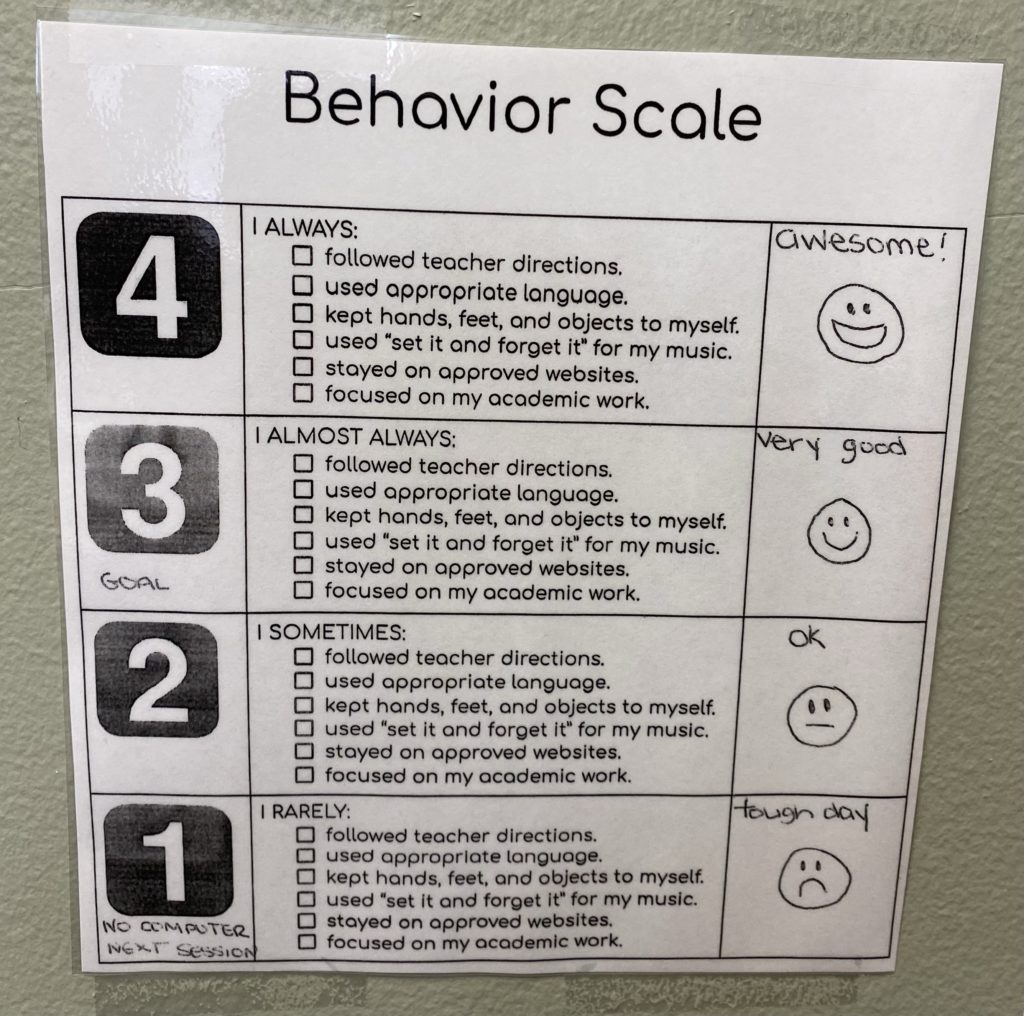In my last post about exit tickets, I mentioned that I have my students self-assess their behavior at the end of their one-hour-long class session. To do this, I have developed a four point scale based on Marzano’s model. Again, I needed something that I could use consistently across all my classes which include students in kindergarten through twelfth grade and with a wide variety of educational needs. The current version I’m using is shown in the picture below.

On our scale, four is the highest and one is the lowest. Anytime we use a four point scale, the goal should be for students to earn a three. In my setting, that means the student attended class, worked on their assignments, and was generally respectful to those around them. Students who are having a rough day and unable to really focus on their work can still earn a three. If they let me know what’s up, we work together to make a plan for the class period–which looks different each time. Sometimes it’s drawing; sometimes it’s writing; and sometimes they need to just focus on something different for a while so we’ll grab some puzzles, word searches, or sudoku. I even had one student ask if he could do 83 push-ups! Sure you can! Me? Not so much!
A four is earned when behavior is even better than expected; maybe the student was especially helpful to a peer or persevered through something that was really tough. Just today I had a student earn a four. She had never before used long division to divide polynomials so I showed her how to do it and she worked super hard all hour (I even forgot to dismiss class because we were so into it!). She thought it was really hard, but she stuck to it, kept working through it, and ended up doing a great job.
A two means you had an okay day: not great but not terrible. Maybe the student was on websites that are not allowed and chose not to stay off them after being redirected. Maybe we said a bunch of not-so-nice things to our peers. Maybe we decided to throw fidgets at the ceiling after Melissa told us sixteen times not to…(that would never happen, right?).
A one means things were not good…in a pretty big way. I’ve only given out maybe three or four of these all year so far. This looks like throwing chairs, ripping things off the walls, punching someone…basically, there is a path of destruction somewhere. A one also means I need to review the day and see if I can make any changes that will help tomorrow go better for that student. Behavior is communication–what was that student trying to tell me?
I purposefully designed each of the spots on the scale to use mostly the same wording. This allows students to know what behavior expectations are important and they don’t have to remember different standards when reflecting on their own behavior when earning a two instead of a three, for example. I also added the smiley faces to help guide my students who aren’t readers yet.
I love using four point scales in my classroom! I think they work exceptionally well for measuring behavior in a way that teaches students that perfection is not expected and each day is a new day. If you use any, I’d love for you to post a picture!
